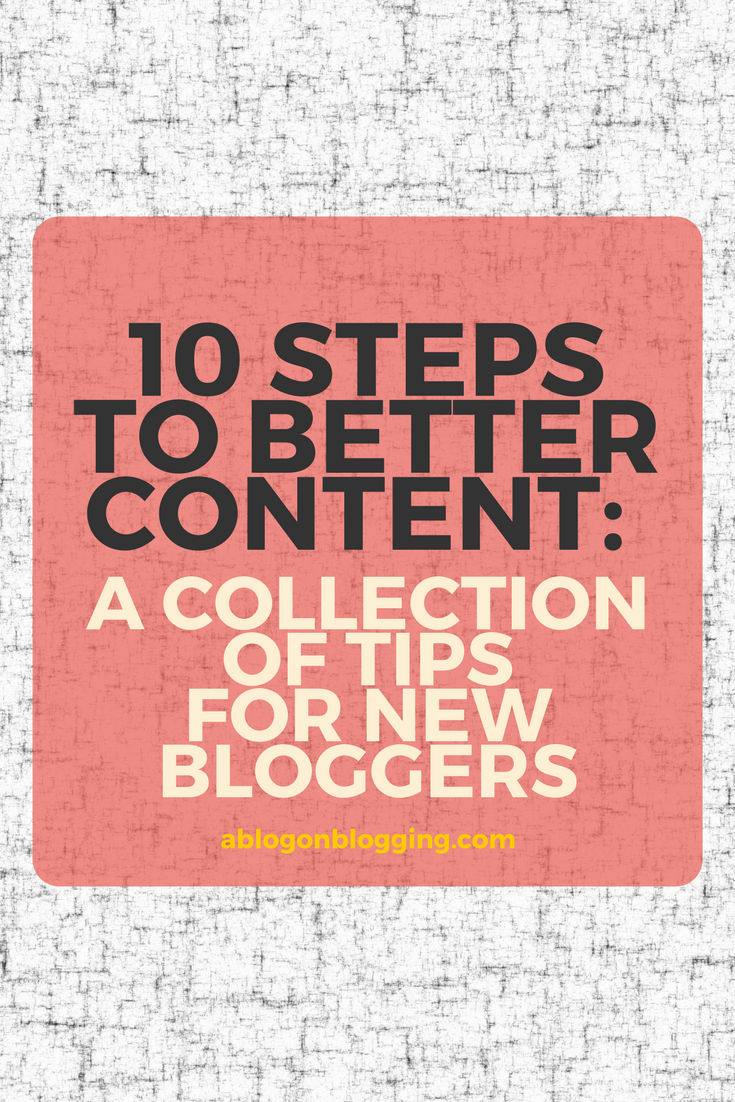When you don’t know what to write about or you have the dreaded writer’s block, it’s important to find little pick-me-ups to provide motivation and focus.
Today I want to give you a simple checklist. Use this checklist each day and train yourself to implement these tips while you write.

Give Your Website Content Purpose
As Simon Sinek says, “Start with the ‘Why’”. And he’s right. Do you give readers a reason for reading the website and content you provide?
Readers want to read something that’s engaging. Something that will solve a need or educate them further. Create a website that will be a focal point for clients.
Some questions to ask before you start writing your next blog:
- Is this topic unique? If not, how does the content differ from others. What am I offering my reader that other blogs can’t provide?
- Am I answering a question?
- Am I providing the reader with lots of research opportunity via links, references or quotes?
- Is my advice actionable?
- Will this information improve the lives of readers?
- Will this information teach someone something they may not have known before reading it?
What Guidelines Must You Follow?
You can’t always write content according to your own style. Depending on the content you’re writing the style and tone need to deliver the “why” value customers seek.
Yes, tone and style will vary. A fashion blog will have an upbeat tone of content, will make use of phrases and words to provide humour to captivate the target audience. In contrast, a medical journal will have a more refined tone.
No matter the topic there are general guidelines to follow that ensure value in reading:
- Don’t beat around the bush. You will write better content that’s easier to grasp if you get to the point.
- Always use common words. This ensures everyone will understand your content.
- It’s best to provide definitions of acronyms or abbreviations. It makes your articles more understandable. Throughout the piece you can use acronyms and abbreviations to provide a better read.
- Limit the number of words and sentences. This ties in with the first tip. It will help you get to the point quicker.
- Use active voice. It helps to paint a picture and keeps sentences shorter.
- Use hyperlinks. By linking your article to other websites you will attract more readers.
- Be affirmative in your writing. When you’re listing the negatives do so in a positive manner which doesn’t show condescension. Affirmative writing evokes a positive response.
- Provide descriptive sentences. Readers will automatically read further if the first sentence demonstrates a descriptive idea that’s of value to them
- Use lists. It’s easier on the eyes than one paragraph.
What Are The Keywords You Need to Include in Your Copy?
If you’re a first time blogger it’s best to write using an abundance of keywords. Why? To get as many readers as possible of course.
As the saying goes “If what you’re looking for isn’t on the first page of Google then it doesn’t exist” Keywords increase the probability of your article being found. The keywords you use must be unique from one another yet still relate to each other.
If you are reviewing a holiday home, keywords to include are for example: guest house; holiday home; bed and breakfast, self-service room, guest lodge. You’re practically mentioning the same keywords in various ways.

Does the Content Solve a Problem or Meet a Need?
As mentioned before, everything that you write must have a purpose. And this purpose must essentially be the answer the reader seeks.
Put yourself in the reader’s shoes and determine if the content you’re writing is beneficial. This will help you create interest and ensure the solutions to common problems or challenges.
If your article’s title reads “Five best laptops” viewers will want to read the differences of the specs between them. Such as RAM, storage, processor, screen definition etc.
They will not appreciate an article about how this laptop is better than another because of the metallic colours. Keep it relevant.
Who is Your Target Audience and What Are Their Pressure Points?
When writing content always target one audience of readers. By doing this you create valuable content as opposed to disassociated information. You want to cater to more than one target audience.
Yes, you can’t control who reads your article. But it’s still important that you provide consistent, valuable information
For example: if your article is reviewing the top 2017 soccer stars, your target audience will be sports enthusiasts.
They will want to read details that determine the characteristics & stats of your top choices; such as the amount of goals scored, saved or ball possession.
If you’re including other details like the cars they drive, their homes and holiday homes etc, you’re deviating from the purpose of the article and targeting other readers. It just wouldn’t make sense.
Does the Content Engage Visitors?
The content written must inspire the reader and call for action.
Create engaging content by:
- Establishing your voice: You need to establish a personality for the content that you write. This personality needs to be consistent with every piece that you write to bring a level of comfort to your readers when they revisit your site.
- Use active words: Active words help readers to participate in your site and makes them a part of what you’re writing.
- Focus on the readers: Content written must solve the reader’s problems and essentially be about them.
- Talk about the benefits: Inform the reader about the benefits they will receive as opposed to writing about the features. This will also make the content about the reader and not the product.
- Add calls to action: Depending on the content written there must be at least one call to action. This helps readers obtain their needs quicker. Call to actions can be website links, contact numbers or even the provision of a location.
Write a Draft
Once you have typed up a piece it’s important to proofread before posting it online. Proofreading can save you from embarrassing mistakes, and prevents readers from not taking you seriously.
Proofreading also helps you pick up on language errors. With the beauty of typing programs they will point out the typos. But many of them will not point out sentences that are not grammatically correct.
It’s important to also keep things consistent when writing.
For example: when writing an article on computers, stick to one name. It will look messy if you’re saying “PC” in one section “computer” in another. (This doesn’t apply when you’re comparing brands or types).

Write Visually
Everyone loves eye candy. Make sure your content is neat and pleasant to look at. Make use of subheadings, a great color theme and a styled font for all headings.
Paint a picture. Tell a story. You readers will feel fatigued if they are reading one long paragraph. Shorter paragraphs read better and are easier to skim through. They get to the point faster and readers will remember your content.
What’s the Conversational Style?
Each piece of writing must have a conversational tone which will be linked to the target audience. This speaks to the visitor personalities and makes them feel welcomed.
For instance: articles targeted to those in a scientific field will generally have a formal and informative tone. Blogs dedicated to fashion and beauty entail a personal tone by making use of “you”.
Before commencing with the content, set in place the tone needed to target the audience. This ensures you will not write in other tones.
Make Sure It’s Easily Summed Up for Social Sharing
Once you’re happy with the content and officially post it online, ensure there is a feature for readers to share it on their social networks. Also enable a comment section so that your readers can start a conversation.
Summing up your articles will also encourage sharing. Users want to share content that’s easy to digest and easily communicated.
Closing Words
These tips are simple but very effective.
Use this as your check list when you write your blogs and you’ll be on your way to a successful blog within months from starting.
Once you master these, move on to slightly more advanced blogging tips for supercharged success!

